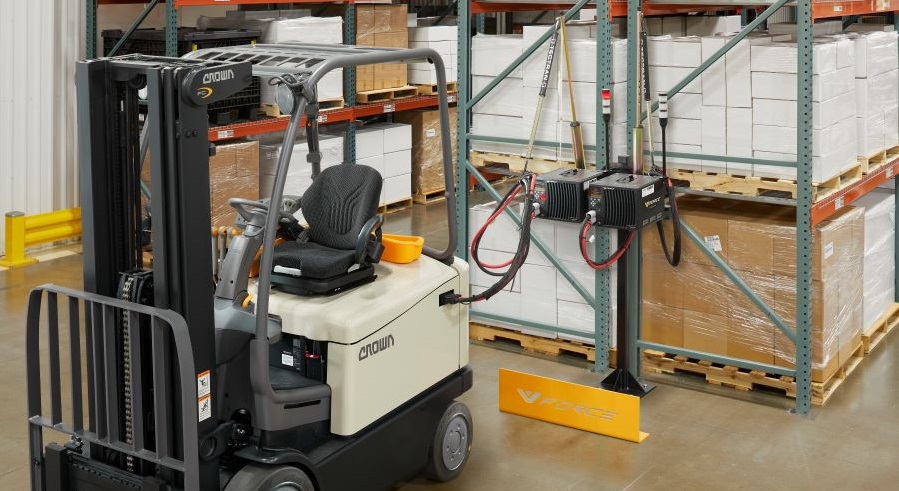When the Answer isn’t “More Power,” Choose Your Tools Wisely

In a prior blog, we discussed the importance of conducting a power study to truly understand how your forklift fleet consumes power. The rate of power consumption is a function of the equipment you use, at least to some degree, other application-specific factors and your internal processes. Any or all three can greatly impact how you charge and use your electric forklift fleet, which means that any approach to improve your forklift fleet’s efficiency and increase uptime is likely to use a multi-pronged approach.
Choosing the right tool for the job
Every application is different, each with specific material storage and movement requirements. Some are skewed more toward lifting and lowering, for instance, while others may involve a high percentage of transport from place to place. Still, others may involve a lot of short, floor-level movements, like those that occur on loading docks or in cross-dock applications. Consequently, it is important to ensure that you use a forklift that best fits the majority of its assigned tasks. It also means that your power solutions may vary depending on a forklift’s primary function and the equipment selected to perform it. There’s much more power consumption involved with frequent lifting and lowering pallets than transporting them. Perhaps there is even less power consumption when completing short dock movements to stage pallets for loading. A power study will consider these functions, and the recommendations may include reassignment of equipment, or even batteries and chargers, to better align resources with requirements.
Consider your entire toolkit
While choosing the best tool for each job might provide the ideal solution for each material handling function, it may not result in the best overall selection of tools. For instance, some functions might be assigned to a single forklift type that is more versatile in adapting to different functions. This tool then becomes a shared resource and the power requirements for all of its functions should be evaluated collectively. You must also consider where these functions fit in your overall application and how they are aligned with the time of day or across multiple shifts. This timing could affect how battery life is best utilized and how recharging or even battery swapping should be implemented for the most efficient results. Most applications utilize a combination of purpose-built forklifts and others that are flexible enough to handle multiple tasks. A power study needs to take this into consideration and provide battery and charger recommendations that best utilize the available equipment.
It’s not just the tool, but also how you use it
A power study can also reveal that you’ve made good choices about which equipment to purchase for your overall application. It can also identify opportunities for better ways to utilize the equipment to gain uptime and power efficiencies. For instance, how and when you charge your forklift batteries and rotate or assign your battery inventory to your equipment, can make a big difference in your overall productivity and cost of ownership. While many operations treat all batteries, chargers and forklifts the same, there may be good reasons to install specific batteries in specific forklifts and select a charging profile for those batteries that best fits their application. There is often a case to be made for a mixture of conventional, opportunity and fast charging.
Your battery maintenance process can also be critical to ensuring that you increase your operating time and extend the life of your battery inventory. Battery watering and cleaning, completing periodic equalization charges and maintaining the integrity of our battery and charger cables and connectors are all important contributors to getting the most from your battery investment. A power study will typically identify any deficiencies in these processes and provide recommendations for how to avoid them.
Putting it all together
The skeptic might look upon a power study as simply a way for a supplier of material handling equipment to identify new sales opportunities, especially for batteries, chargers and other maintenance accessories. To be honest, there are always opportunities for upgrading your warehouse tools to the latest technologies, but the knowledge you might gain about your application from a power study could prove to be just as valuable to your overall efficiency and productivity. When you rely on a supplier that considers all of the facets of forklift ownership that can affect your overall cost, you might learn a bit about the products and services they provide, but you may learn far more about your business.
For more information about all of the components of a V-Force® Energy Solution, visit the Energy Solutions page on crown.com.